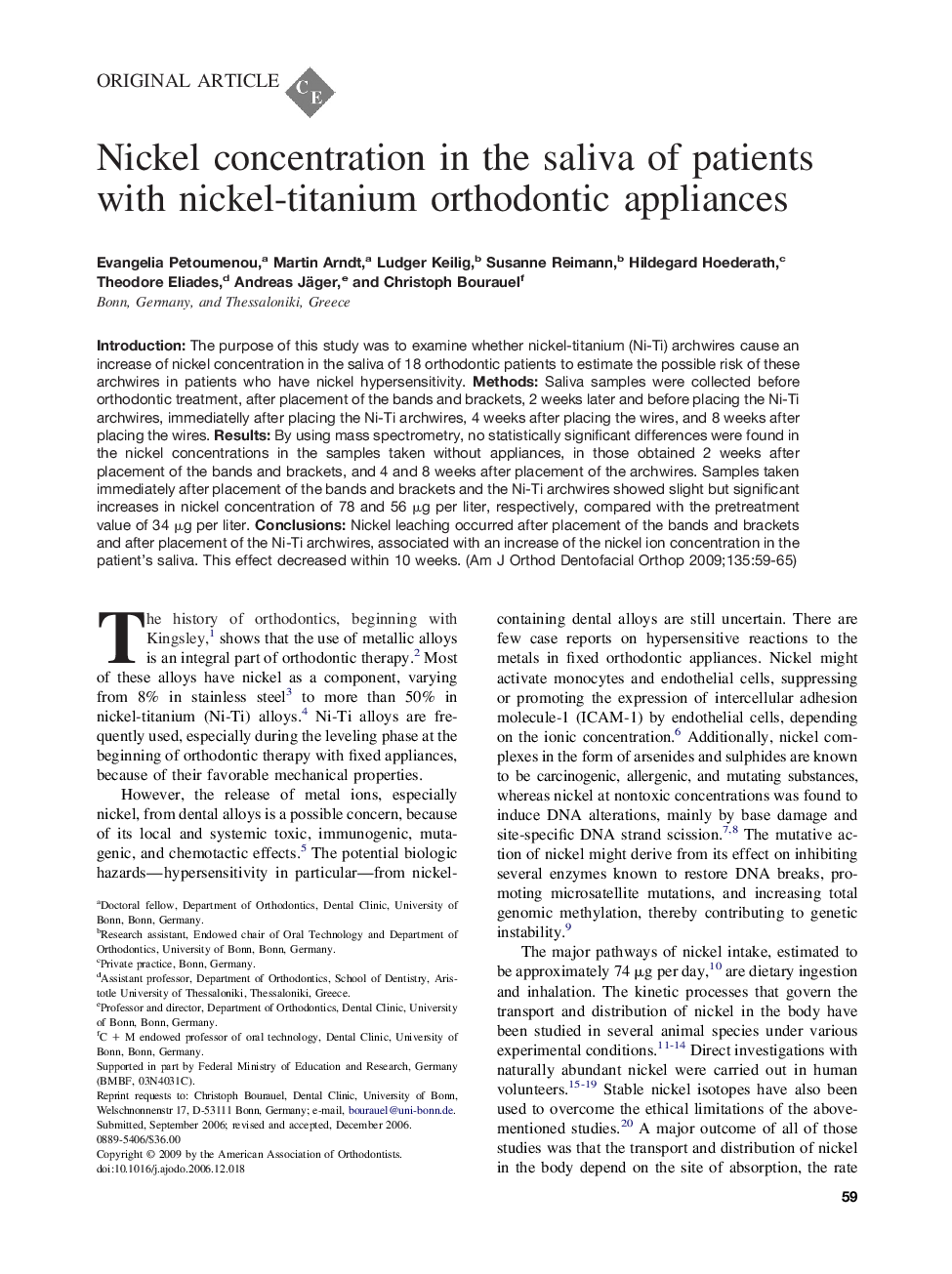| Article ID | Journal | Published Year | Pages | File Type |
|---|---|---|---|---|
| 3120077 | American Journal of Orthodontics and Dentofacial Orthopedics | 2009 | 7 Pages |
IntroductionThe purpose of this study was to examine whether nickel-titanium (Ni-Ti) archwires cause an increase of nickel concentration in the saliva of 18 orthodontic patients to estimate the possible risk of these archwires in patients who have nickel hypersensitivity.MethodsSaliva samples were collected before orthodontic treatment, after placement of the bands and brackets, 2 weeks later and before placing the Ni-Ti archwires, immediatelly after placing the Ni-Ti archwires, 4 weeks after placing the wires, and 8 weeks after placing the wires.ResultsBy using mass spectrometry, no statistically significant differences were found in the nickel concentrations in the samples taken without appliances, in those obtained 2 weeks after placement of the bands and brackets, and 4 and 8 weeks after placement of the archwires. Samples taken immediately after placement of the bands and brackets and the Ni-Ti archwires showed slight but significant increases in nickel concentration of 78 and 56 μg per liter, respectively, compared with the pretreatment value of 34 μg per liter.ConclusionsNickel leaching occurred after placement of the bands and brackets and after placement of the Ni-Ti archwires, associated with an increase of the nickel ion concentration in the patient's saliva. This effect decreased within 10 weeks.
